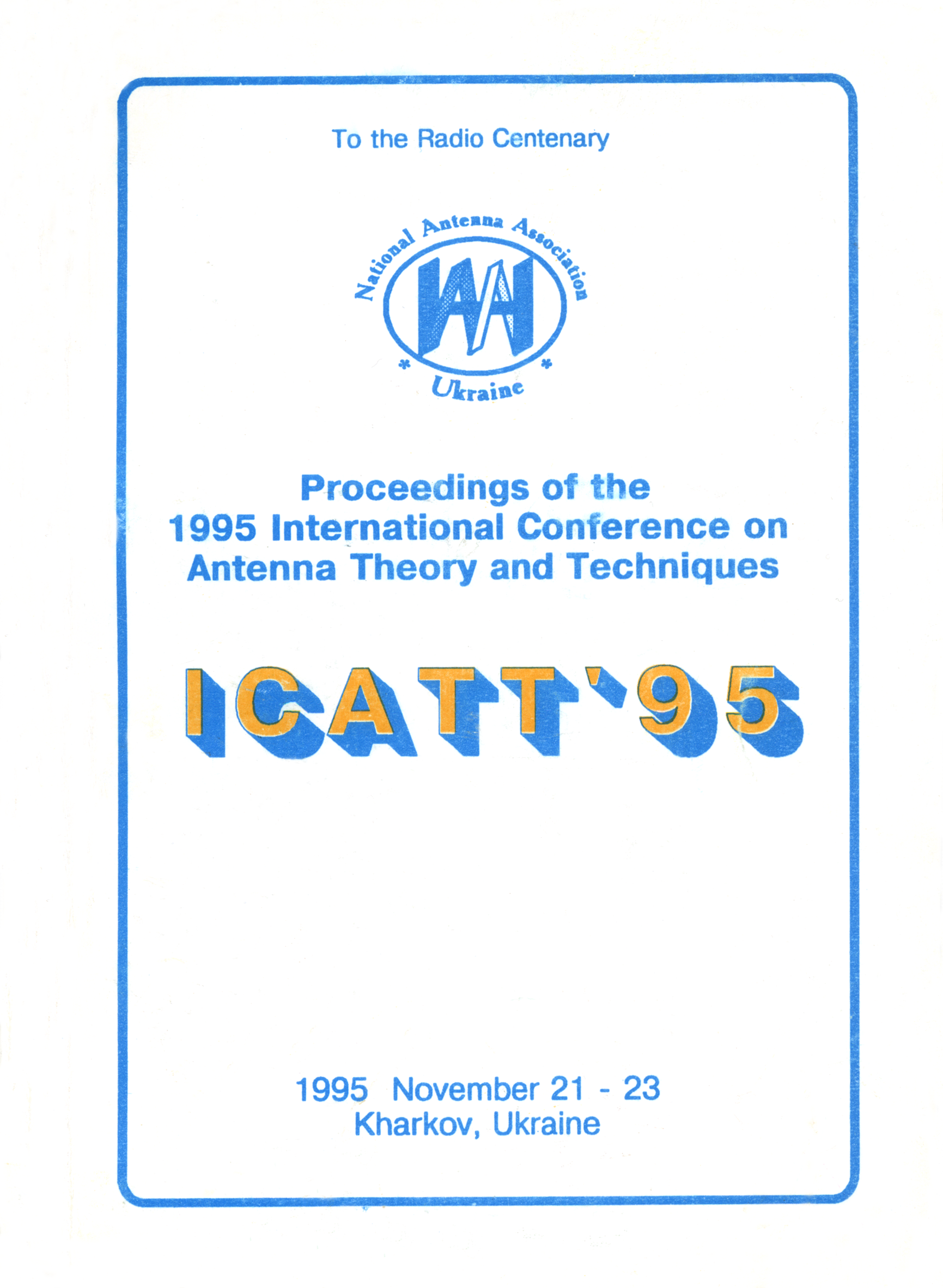Components and devices of microwave-frequency circuits
DOI:
https://doi.org/10.1109/ICATT.1995.1234168Abstract
The improvement of microwave-frequency band radio engineering systems is tightly connected to the latest achievements in the field of microwave electronics, advanced component design, material science, development of the methods of analysis and simulation, parameter optimization of systems and devices.
Extremely great diversity of requirements put on the electromagnetic performance, weight, overall dimensions, and mechanical and climatic characteristics of the devices, as well as the technological peculiarities of manufacturing processes, determine a corresponding variety of the device designs.
In view of the described situation, the task of designing the optimized microwave devices is tied with a possibility of realization of a tradeoff between man, often contradicting to each other, requirements to their performance features. As a rule, the solution of the above mentioned task depends on the level of development of mathematical models and methods, which enable one to describe and theoretical investigate the wave field behavior in microwave devices and components.
This paper considers the most widely encountered structural realizations of microwave devices. Special attention is paid to the analysis of characteristics, design methods, and a review of the research and technological experience of developing the microwave devices in Kharkov State University. In particular, this work focuses on the problems of investigating the principles of designing the small-size electronically controlled fast-tunable bandpass filters of the decimeter and centimeter wavelength band. Such filters enable one to solve the problem of the jamming immunity of radar systems, and create miniature filtering devices of a high electromagnetic performance but 3 to 5 times smaller than conventional filters. The paper presents the results of theoretical and experimental investigations of the characteristics of the frequency-selective microwave devices based on the dielectric resonators made of a leicosaphire single-crystal. It is shown that by combining the resonators of different classes in the same device offer a way to obtain high electromagnetic parameters, which cannot be achieved by conventional approaches. Research experience on the original small-size bandpass filters and termination filters based on the leicosaphire and ferrite-leicosaphire elements of various geometry, encased in a waveguide-type metal screen, has allowed us to design a series of microwave devices. Among them, there are narrowband filters for a fixed frequency based on a high-quality resonator with a rarefied spectrum of parasitic oscillations, wide-band filters with low band losses and a wider suppression range, electrically tunable filters and termination filters (with automatic frequency control), measuring sections for non-destructive control of microwave parameters of dielectric and ferrite materials.
The paper pays a special attention to the developing of theoretical simulation methods and electromagnetic characterization of devices based on the free-standing or dielectric-loaded slot coupling elements located at the walls of the hollow waveguides or the ones loaded with slow-wave structures. Numerical algorithms and theoretical analysis of slot radiators and devices based on the resonant coupling elements has enabled us to clarify the field behavior in the waveguide circuits and to study the physical features of slot radiators of complicated shape. For instance, this helped us to understand why an X-shaped resonant slot does not radiate a circularly polarized field, and to reveal the conditions for radiating of such a field by an X-shaped slot, to investigate filters, directional couplers, microwave polarizers based on the slot elements and diaphragms. Also considered are the problems of simulation and design of microwave devices based on the strip and microstrip lines, integrated and modular circuits of switching microwave components, and others.
